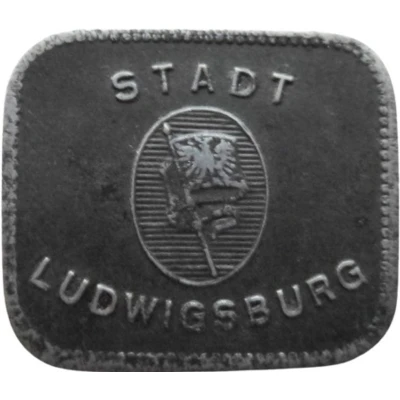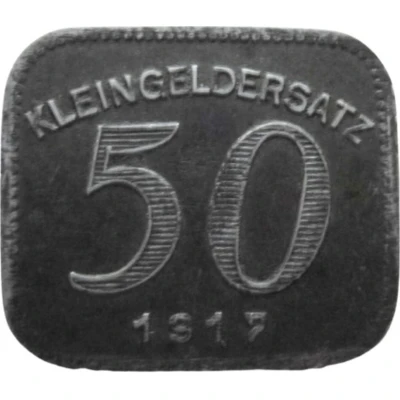


© Willem63 (CC BY-NC-SA)
50 Pfennigs - Ludwigsburg
1917 year| Iron | 3.5 g | - |
| Issuer | City of Ludwigsburg (Federal state of Württemberg) |
|---|---|
| Emperor | William II (Wilhelm II) (1888-1918) |
| Type | Standard circulation coin |
| Year | 1917 |
| Value | 50 Pfennigs (50 Pfennige) (0.50) |
| Currency | Mark (1914-1924) |
| Composition | Iron |
| Weight | 3.5 g |
| Size | 22.4 × 19.5 mm |
| Thickness | 1.25 mm |
| Shape | Rectangular |
| Technique | Milled |
| Orientation | Medal alignment ↑↑ |
| Demonetized | Yes |
| Updated | 2024-10-04 |
| Numista | N#201307 |
|---|---|
| Rarity index | 80% |
Reverse
Legend above denomination, date below
Script: Latin
Lettering:
KLEINGELDERSATZ
50
1917
Edge
Plain
Comment
Issuing body: [Stadt, Württemberg].Interesting fact
One interesting fact about the 50 Pfennigs - Ludwigsburg 1917 coin is that it was minted during a time of economic and political turmoil in Germany. The coin was issued during the reign of King Wilhelm II, who ruled from 1888 to 1918. During this period, Germany was facing severe economic challenges, including hyperinflation, which led to the devaluation of its currency. The 50 Pfennigs coin, made of iron and weighing 3.5 grams, was a response to the economic crisis, as it was designed to be a more affordable alternative to coins made of precious metals like gold and silver. Despite its humble composition, the coin remains a valuable collector's item today, with some mint conditions selling for hundreds of euros.